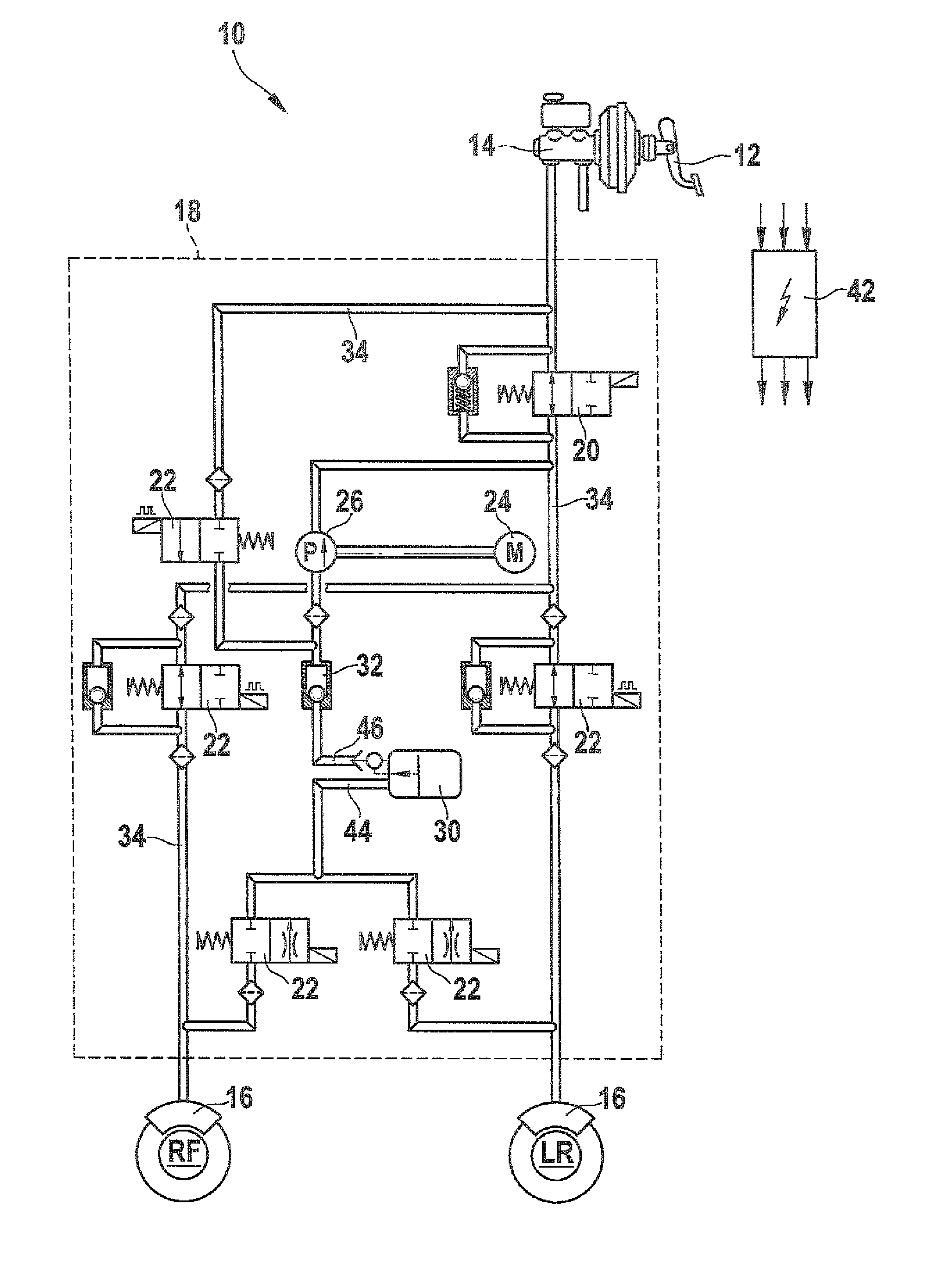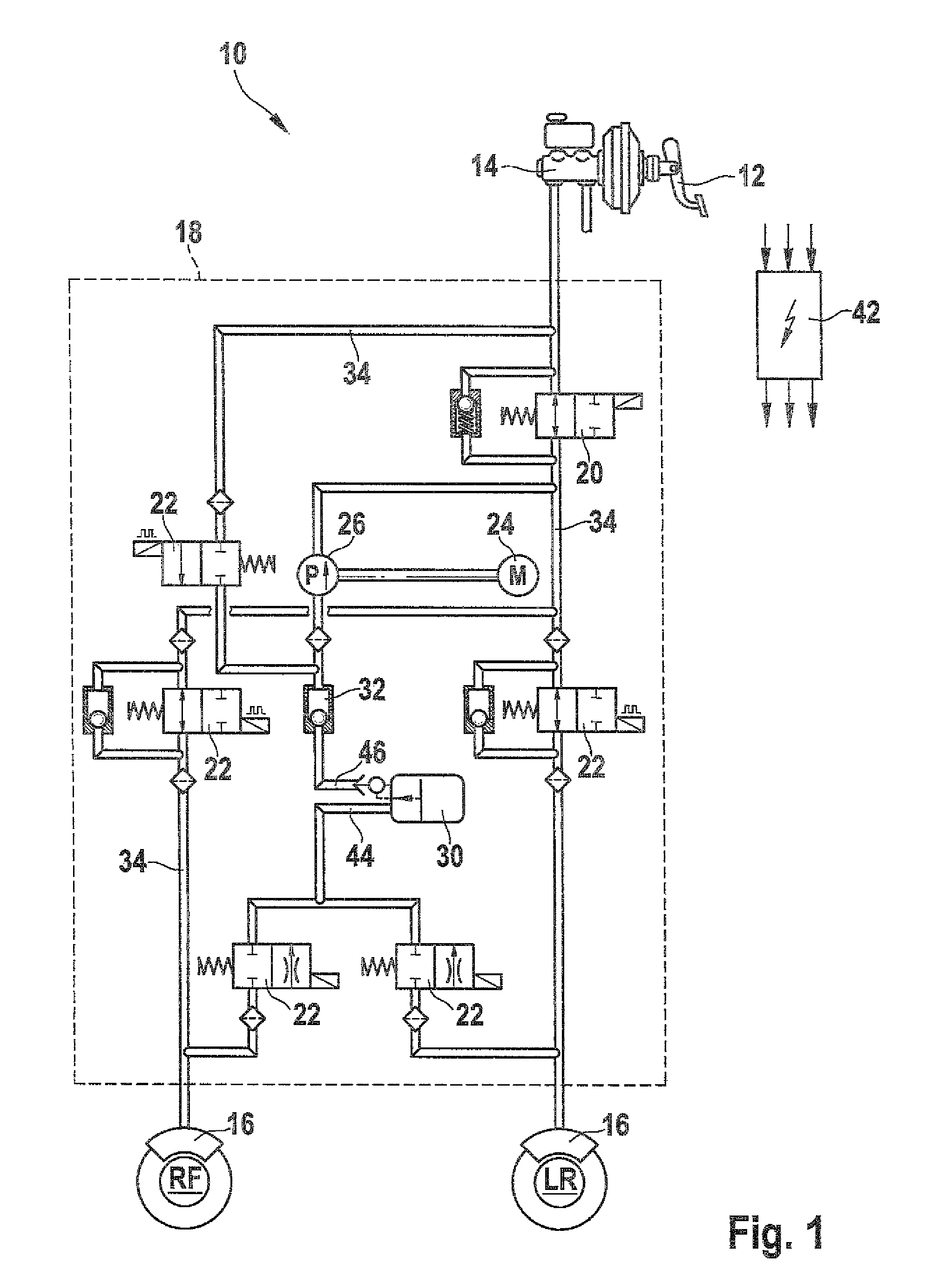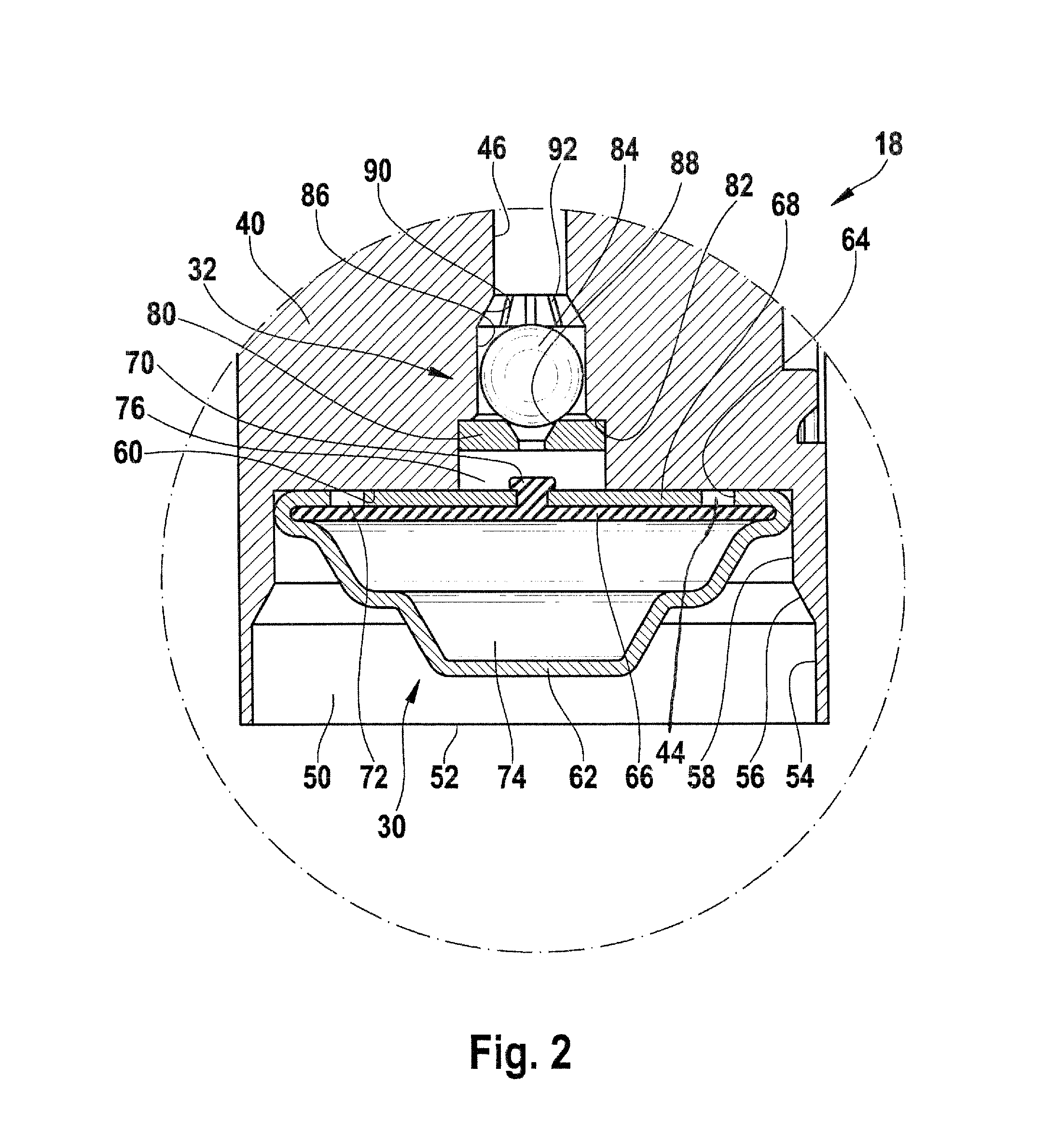Hydraulic vehicle brake system having a service brake which can be actuated by muscle force and having a device for regulating the wheel slip
a technology of hydraulic vehicle brakes and brake pads, which is applied in the direction of brake systems, vehicle components, braking components, etc., can solve the problems of affecting the brakes of the wheel, increasing the cost of modular system development and maintenance, and adversely affecting production costs and the resultant structural volume, so as to reduce the number of individual parts and improve the functional properties. , the effect of saving resources
- Summary
- Abstract
- Description
- Claims
- Application Information
AI Technical Summary
Benefits of technology
Problems solved by technology
Method used
Image
Examples
Embodiment Construction
[0023]FIG. 1, in a schematic illustration, shows the circuit diagram of a hydraulic vehicle brake system 10 having a device for regulating wheel slip. A master cylinder 14 actuatable by a brake pedal 12 can be seen, along with two interconnected wheel brakes 16 in one brake circuit. A hydraulic unit 18 is disposed between the master cylinder 14 and the wheel brakes 16. This hydraulic unit 18 is shown in FIG. 1 by an outline shown in dashed lines. It includes various electromagnetically triggerable multi-way valves 20, 22, a pump 26 actuatable by a drive motor 24, a hydraulic reservoir 30 supplying the pump 26 with pressure fluid, and a check valve 32 located between the reservoir 30 and the pump 26. These hydraulic components mentioned are connected, on the basis of pressure fluid-carrying lines 34, to form a hydraulic circuit. These lines 34 are embodied as bores in a hydraulic block 40 (FIG. 2) of the hydraulic unit 18; in a later work operation, these bores are closed off from th...
PUM
 Login to View More
Login to View More Abstract
Description
Claims
Application Information
 Login to View More
Login to View More - R&D
- Intellectual Property
- Life Sciences
- Materials
- Tech Scout
- Unparalleled Data Quality
- Higher Quality Content
- 60% Fewer Hallucinations
Browse by: Latest US Patents, China's latest patents, Technical Efficacy Thesaurus, Application Domain, Technology Topic, Popular Technical Reports.
© 2025 PatSnap. All rights reserved.Legal|Privacy policy|Modern Slavery Act Transparency Statement|Sitemap|About US| Contact US: help@patsnap.com



